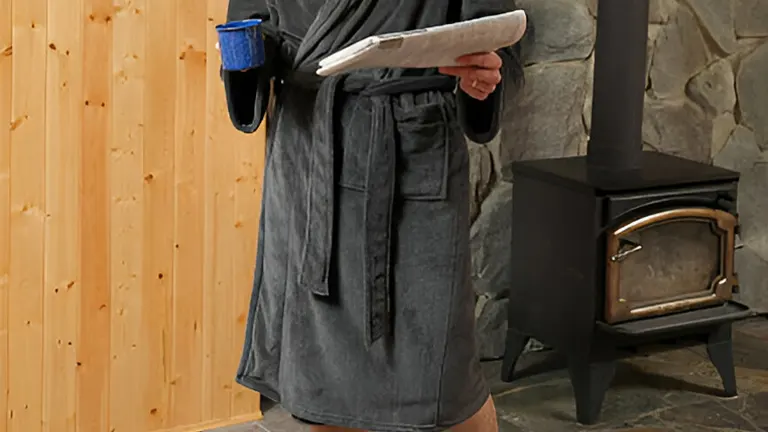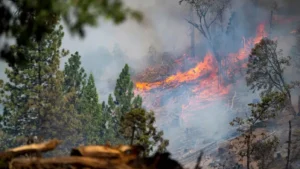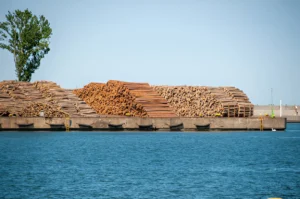Debate Over Wood Burning Stove Ban
- April 17, 2024
- 0 comment
As discussions and headlines about a possible ban on wood stoves grab everyone’s attention, it’s important to dive into the facts and understand the bigger picture. Let’s clear up the confusion and explore what’s being done to reduce their impact on the environment.

Understanding the Rumors and Realities of Wood Burning Stove Ban
Lately, there’s been a lot of talk about a possible ban on wood stoves throughout England, stirring up worry among many homeowners. Yet, according to the latest Environment Improvement Plan (EIP) 2023, there’s no actual plan in place to ban these stoves. Instead, the emphasis is shifting towards encouraging cleaner burning techniques and enhancing air quality via the Clean Air Strategy and additional regulatory actions. This approach aims to balance traditional heating methods with the need for environmental sustainability.
Understanding the Environmental Impact
Launched in 2018 and strengthened by the Environment Improvement Plan (EIP) 2023, the Clean Air Strategy is all about making the air we breathe cleaner and keeping us healthier. Here’s a closer look at what’s being done:
- Focus on Cleaner Solutions: There’s no outright ban on wood stoves, but there’s a big push for using cleaner, more advanced technologies and fuels that pollute less.
- Stopping the Sale of Dirty Fuels: The government has put a stop to selling the dirtiest types of fuels, helping cut down on the nasty stuff that gets into our air.
- Tougher Rules for Stoves: Only the cleanest stoves that meet strict environmental standards are allowed to be sold now. This ensures that newer stoves contribute less pollution.
- More Power to Local Authorities: Local governments have been given more authority to crack down on areas with bad air quality, making sure that communities can breathe easier.
Regulatory Measures and Certifications
The Air Quality (Domestic Solid Fuels Standards) Regulations 2020 marked a significant shift in how we use fuel at home. This regulation has stopped the sale of wet wood and house coal, pushing people to choose cleaner options. Certifications from HETAS and Woodsure’s Ready to Burn scheme play a crucial role in this shift. These certifications guarantee that products comply with strict emission and safety guidelines, encouraging the adoption of cleaner burning methods. By choosing certified fuels and technologies, consumers contribute to reducing pollution and enhancing air quality.
The Role of Research and Collaboration
Understanding and combating pollution requires ongoing and upcoming research to pinpoint major pollution sources and develop effective mitigation strategies. Partnerships between government agencies like Defra, non-profit organizations like HETAS, and the wider scientific community are essential. These collaborations are key to crafting well-informed policies and pioneering technologies that promote cleaner burning. Such joint efforts ensure that solutions are based on solid scientific findings and are practical for real-world application.
Personal Responsibility and Actions
While policies and regulations are crucial, the role of individuals in reducing environmental impact cannot be overstated:
- Choose Certified Fuels: Opt for Ready to Burn certified fuels that contain less than 20% moisture. These fuels burn more cleanly and efficiently, significantly reducing the amount of harmful emissions.
- Regular Maintenance: Keep your wood stoves and chimneys well-maintained. Regular checks ensure they burn efficiently, lessening your environmental footprint.
- Update Your Equipment: Consider replacing old stoves with newer models that meet current environmental standards. Cleaner, compliant stoves reduce pollutants and enhance air quality in and around your home.
Health Concerns Linked to Wood Smoke
Recent studies in the UK have shown a troubling link between wood smoke exposure and increased risks of mental health issues such as depression and anxiety. The particulate matter from wood stoves, often fine enough to penetrate deep into the lungs and bloodstream, can lead to serious health conditions, including respiratory diseases and cardiovascular problems.
Cultural and Economic Considerations
While there is a strong environmental case for regulating wood stoves, there are also cultural and economic dimensions to consider. For many, wood stoves are a less expensive heating option or part of local tradition and lifestyle. Policies aimed at stove regulation need to balance these factors, ensuring that transitions to cleaner alternatives are accessible and affordable.
Conclusion: A Call for Balanced Action
The discussion around wood stoves is not just about regulation but also about making sustainable choices that consider health, environment, and socioeconomic factors. As we move forward, it’s crucial for policies to support cleaner technologies and for individuals to adopt more sustainable practices to ensure that the cozy warmth of a wood stove does not come at the cost of health and environmental integrity.
FAQs
- What exactly is a “Cleaner Choice” certification for wood stoves?
The Cleaner Choice certification indicates that a wood stove meets stringent standards for low emissions and efficient fuel use. It’s like a gold star for stoves that help keep the air cleaner! - Can I still buy a wood stove if they’re bad for the environment?
Yes, you can still buy wood stoves. The key is choosing models that are eco-friendly, meaning they burn cleaner and are more efficient. It’s all about reducing smoke and harmful particles while enjoying the warmth. - How often should I replace my wood stove to ensure it’s environmentally friendly?
There’s no set rule, but upgrading to a newer model every few years can help, especially as technology improves. Think of it like upgrading to a newer, cleaner car! - Is there a way to make my current wood stove less harmful to the environment?
Absolutely! Regular maintenance, using properly dried wood, and installing upgrades like catalytic converters can reduce the emissions from your existing stove. - What are the health risks of wood smoke, and how can I minimize them?
Wood smoke can cause problems like asthma or heart issues due to fine particles. Minimizing these risks involves using cleaner-burning stoves, ensuring good ventilation, and following local burning guidelines. - How does wood stove pollution compare to other heating options?
Wood stoves can produce more particulate pollution than oil or gas heaters. However, modern, certified stoves are designed to burn much cleaner than older models. - What is the impact of wood stoves on local air quality during winter?
In colder months, wood stoves can significantly affect air quality, especially in valleys or areas with poor air circulation. It’s like a seasonal smoke blanket that can linger. - Are there legal restrictions on using wood stoves in urban areas?
Yes, some cities have restrictions, especially during periods of high pollution. It’s like having a speed limit for wood burning to keep the air clean. - Can I do anything to reduce the carbon footprint of my wood burning?
Using sustainably sourced wood, ensuring complete combustion, and maintaining your stove efficiently can all help lower your wood burning’s carbon footprint. - What future technologies might replace wood stoves for sustainable heating?
Innovations like electric heat pumps, solar heating, and advanced biomass stoves are promising sustainable alternatives that might one day take the place of traditional wood stoves.
We hope this discussion has sparked your interest and perhaps even ignited some new ideas about the use of wood stoves. Do you have thoughts or personal experiences with wood stoves you’d like to share? Maybe some tips on making them more environmentally friendly? Drop your comments below—we’d love to hear from you and continue this warm conversation!














Leave your comment